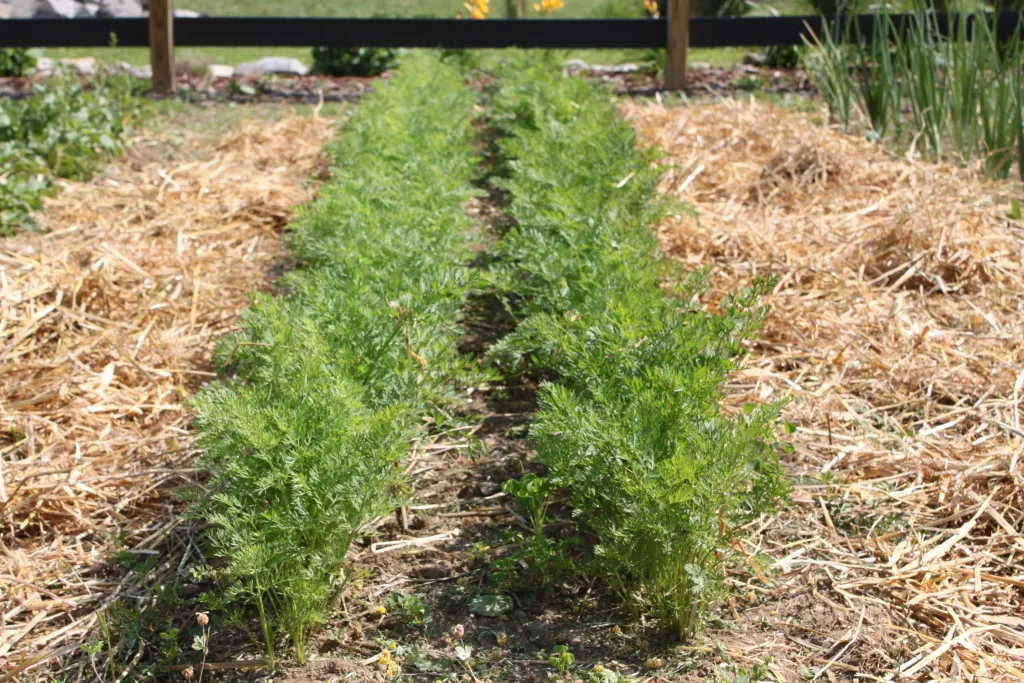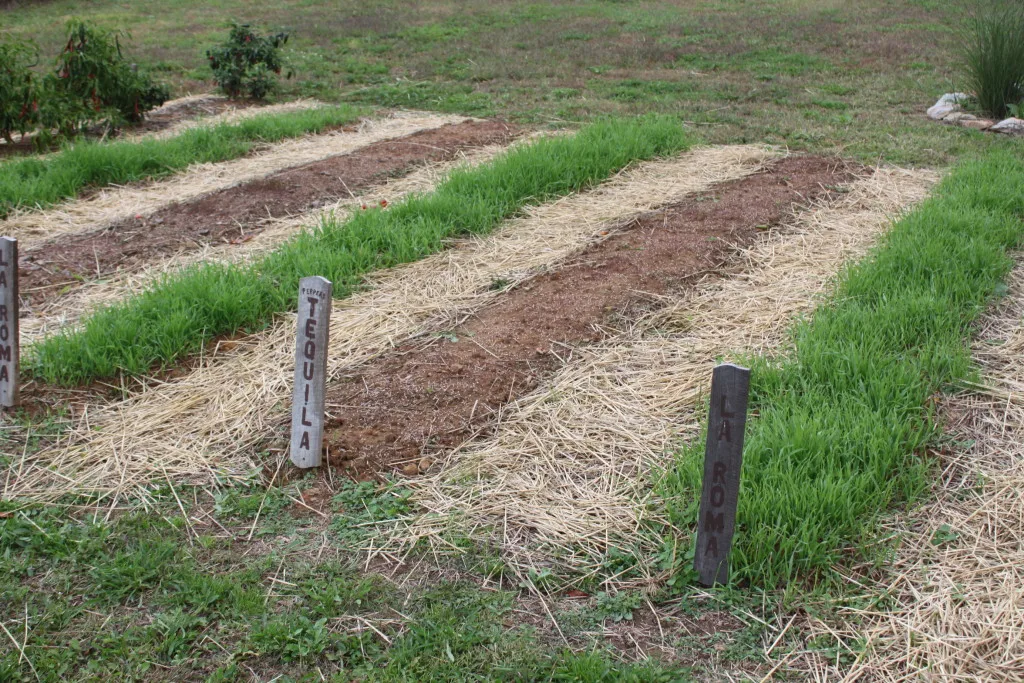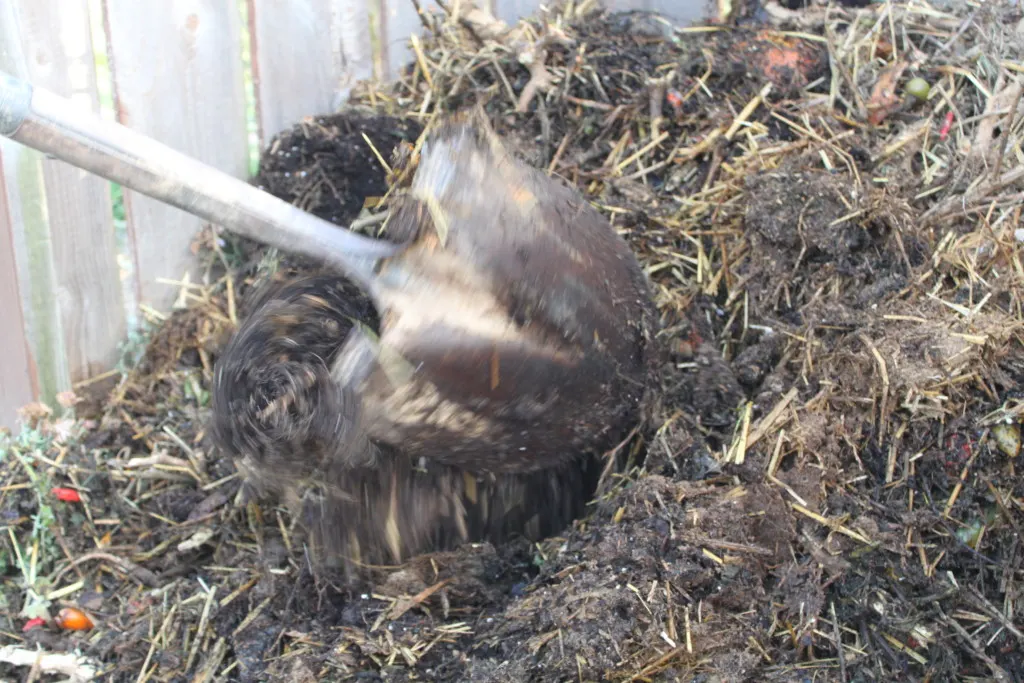To put it simply – soil is to vegetable plants what food is to humans.
With little or no food – human become sick and would eventually perish.

Healthy tomato plants from last year growing with the help of coffee grounds and egg shells
The same goes for those tomato and pepper plants in your garden! If the soil is bad – they get deprived of nutrition – and quickly wilt or die.
So how can you build strong, vibrant, long-lasting soil?
One thing is for sure – expensive synthetic fertilizers are not the answer. They are temporary fixes to a problem that can leave your soil weak, unstable, and full of excess salts and chemicals.
In addition – the more you use – the more you will keep needing adding to attain the same results. Why get into that vicious cycle – when there are simple, inexpensive ways to naturally create great soil.
The good news is that no matter where you live – or what the current state of your soil – you can improve it naturally – and inexpensively! Here are some great tips on doing just that:
Plant A Green Manure Crop This Spring
The best way to feed your garden soil is to give back what you have been taking from it – nutrients!
One of the easiest and least expensive ways to do that is to plant a “green manure” crop in the spring.
Green Manure is nothing more than the sowing of an inexpensive cover crop like annual rye, clover, or buckwheat – and then turning it back into the soil to give back all of its rich nutrients.
It can be done in the early spring in as little as 4 weeks – right before you plant that summer vegetable crop. The best part – its cheap!
We plant all of our raised rows in our 40 x 60 garden in a green manure each spring – usually for around $6 in seed. For more info – see our post on : How To Plant A Green Manure Crop This Spring.
Add Compost To Your Planting Holes
As you plant your vegetables this year – get in the habit of always mixing in a good shovel full of aged and finished compost into each and every planting hole.
Most cannot make enough compost to spread thick layers all over their growing beds – so instead – put it where it counts the most – right into the soil around your plants!
Compost is full of all kinds of nutrients that will feed your plants throughout the year. And as you continue planting each year – all of those compost filled holes begin to add up to better soil!
See: Composting 101 Tips and Tricks
Side Dress Your Plants During The Summer:
Here is another great tip to building great soil while helping your plants along.
Side dress (or mulch) your plants with compost throughout the growing season. We put about a two-inch covering around the base of each plant to act as a mulch.
It also acts a slow release natural fertilizer that supplies plants with nutrients as it decomposes, or as it’s watered by mother nature or you. It also acts as mulch for the plants – regulating the soil temperature and suppressing weeds.
See: 5 Ways To Effectively Use Compost In The Garden
Keep Open Soil Covered Up With A Natural Mulch

Once they are established, mulching is the better option than tillingor between rows. Here carrots benefit from straw mulch – keeping in moisture and keeping back weeds
This one is so important to keeping good soil!
All of that hard work you put in by adding compost and using cover crops can be lost through simple erosion if your soil is left uncovered.
Wind and rain and the hot summer sun take its toll on exposed soil – and studies have shown you can lose over an inch or two of topsoil in just a year if soil is left barren.
So make good use of grass clippings, shredded leaves, straw and other organic materials to cover up and mulch your exposed garden soil.
It not only protects the soil from erosion – but provides even more valuable nutrients as it breaks down.
Best of all – it keeps weeds and weeding to a minimum! What’s better than that?!
See: The Basics Of Mulching In The Garden and Landscape
Plant That Fall Cover Crop This Year!
As that garden season comes to an end this year – make sure you get that soil covered back up with a nutrient filled, soil saving cover crop that not only protects your soil through winter – but gives back all of it’s goodness when you turn it back over in the spring.
A cover crop is just like a green manure crop – except you let it overwinter to protect your soil.
We now practice both the fall/winter cover crop and the spring green manure crop of annual rye in our garden beds – doubling up the nutrients we give back to the soil.
In just a few years – our soil has become full of structure and nutrients – and is simple to work. See: Cover Crops Basics
Keep Making Compost!
Last – if you’re not making compost – get busy! If you are – make more!
The biggest obstacle most people face when making compost is coming up with enough raw materials to create large piles.
You can check out our article on Finding More Ways To Make Compost for tips on overcoming a lack of raw materials.
If you would like to receive our DIY & Gardening Tips – be sure to sign up to follow the blog via email in the right hand column, “like” us on Facebook, or follow us on Twitter.
Happy Gardening and Building – Jim and Mary!




